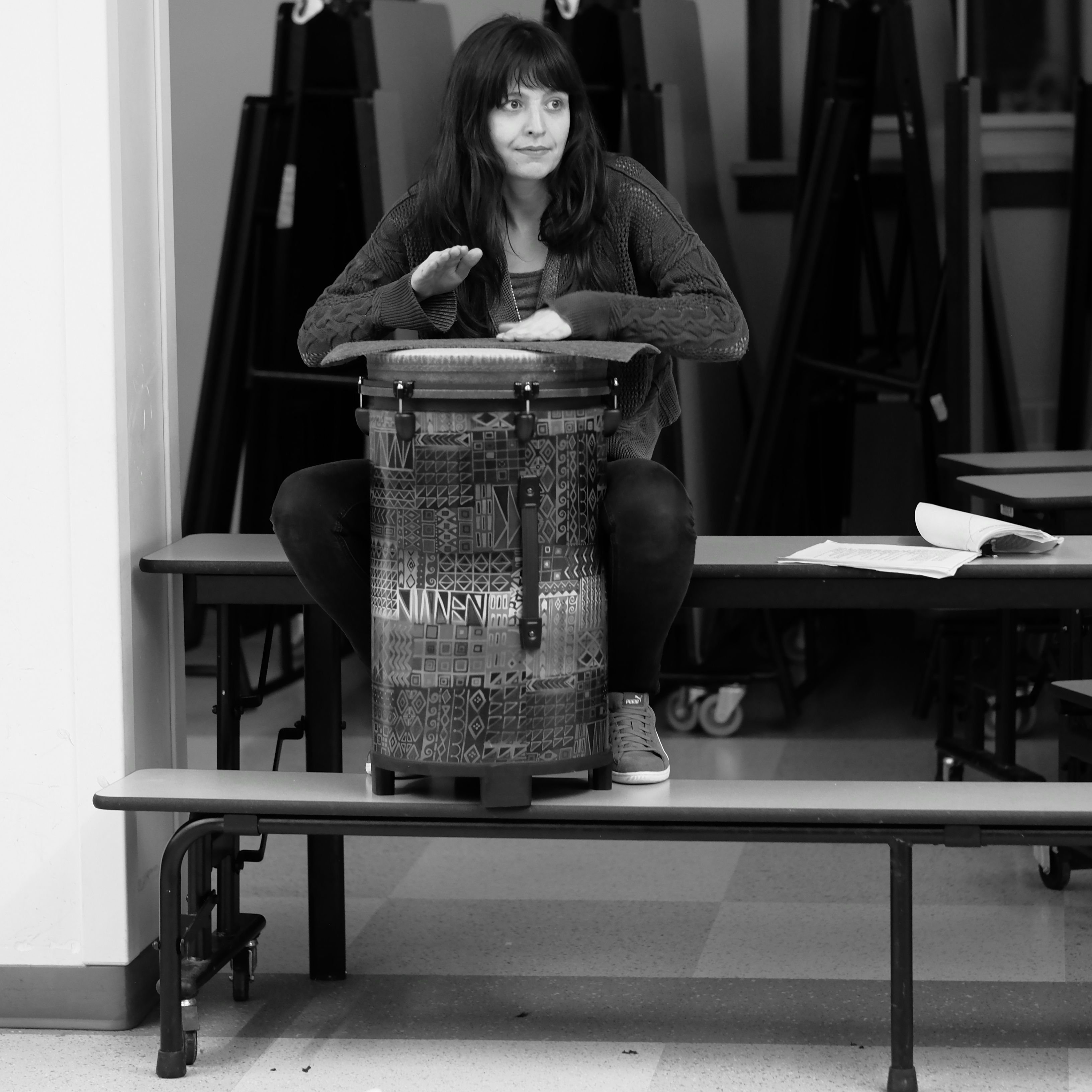I’m an artist, and my body suit is white and female in America.
I make art in vulnerable communities and sometimes my white, female body triggers something for the community-artists I am serving.
For many reasons, I work in low-income and traditionally underserved communities. It’s my way of honoring my blue collar roots and striving to pay my luck and privilege forward by amplifying the voices of others, while giving them (and now you!) access to the tools I have gained along my way.

Last summer, for the first time (!), I had a local philanthropist step up as my benefactor and sponsor a $3,000 fellowship that allowed me to attend two trainings on community-engaged theatre and White allyship. My mentor, a brilliant Latina director and playwright, wanted me to go away and think about how artists can make work that centers racial and gender equity. My task was to create a toolkit for individuals and organizations (particularly historically white/dominant narrative-centric groups) seeking ways of making their work more equitable. I’m going to share some of this toolkit with you today, but first:
The two trainings I attended were
Theatre of the Oppressed Facilitator Training | Mandala Center for Change | Trainer: Marc Weinblatt
CPCP/Michael Rohd Civic Practice Lab | The Center for Performance and Civic Practice/Sojourn Theatre | Trainer: Michael Rohd
(For more on TO specifically, check out my recent blog post: Theatre of the Oppressed: A Rehearsal for the Revolution) Perhaps the most important take-away from both trainings is that community engaged art cannot be made without a thorough understanding of and commitment to racial, gender, and social equity. White Allyship from White-Led Projects and Historically White Institutions is crucial.
And now for part of my toolkit!
7 tips to make artistic work more equitable:
1) Learn and listen. Read articles, books, and commentary on race and civil rights in America. Listen to POC and female leaders on these issues. Take the time to learn and listen before you do anything else.
2) Ask questions, but be educated. Know the issues and what is at stake for the most vulnerable folx in the room. You don’t know their pain, but you can understand what is causing it. See above: Learn and Listen. Approach everyone in an individualistic manner, get to know them and who they are. Ask every person and every community how they want to identify, be identified, and be involved. Make no assumptions. You can’t read a book by its cover.
3) Let POC lead. Share power. The goal is not to take away anyone’s seat at the table, but to build a bigger table for more voices to be heard.
4) Let women lead. Share power. The goal is not to take away anyone’s seat at the table, but to build a bigger table for more voices to be heard.
5) You don’t get to “take a day off”. People of color, women, LGBTQ folx, and others dealing with institutional traumas don’t get to “take a day off” from being themselves. Although it’s uncomfortable, allies need to build up their muscle, and get used to being aware/woke and uncomfortable.
6) Allies spread awareness in their own community. White folks need to talk to other White people about institutional, structural, and historical racism in our country. It’s all well and fine to empower diverse communities, but it is crucial to avoid a “Missionary Complex” and remember that the hardest work is often closest to home.
7) Don’t be silent. Ending racism in our country isn’t just the work of Black and Brown folx. Many potential White allies think they don’t have a role to play, or think they shouldn’t have a voice in America’s conversation on race. That could not be farther from the truth. Read, learn, listen, ask, and then speak up.
Working with people of color, or communities from low to mid socioeconomic status requires facilitators/artists (especially White folkx) to have done thorough analysis of their own perspective(s) on equity, the project goals, and the proposed partner communities before stepping into the ring. Thorough analysis looks like organizational and individual trainings, policy, and project analysis through an equity lens.
Whew! Well, if you’re still reading thank you for dropping by. I’m new here and intend to use steemit to share thoughts on artistic practice, arts opportunities, my personal projects, and other fun things happening in my world.
To kick it off I’m part of the #DolphinSchool Challenge with @markmorris, and will be putting out some content every day! Shout out to some of my favorite new accounts I’ve discovered already: @soyrosa, @naquoya, and @mandelsage. Find out more about me.

